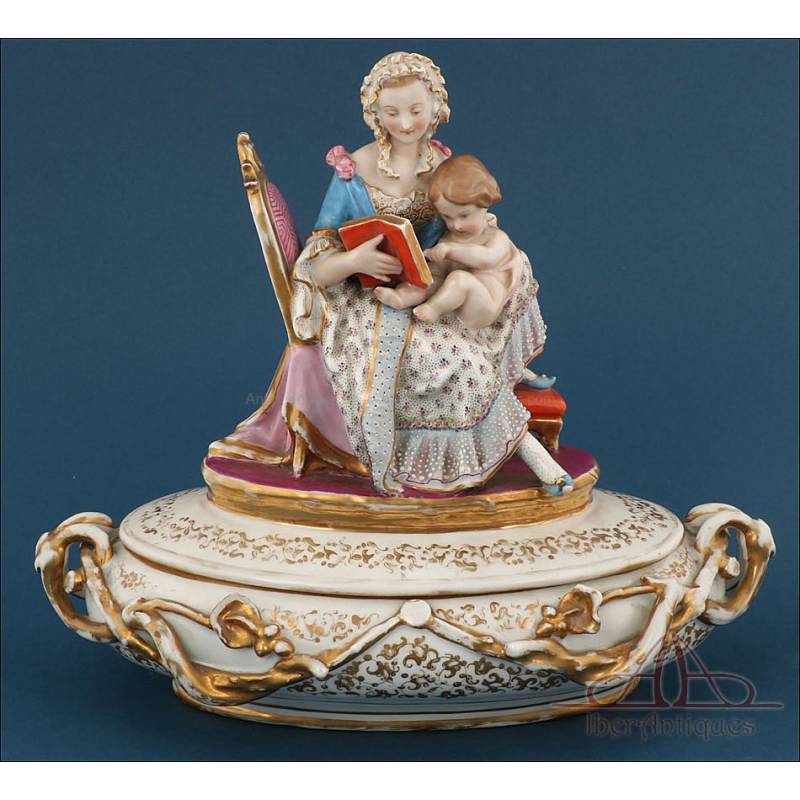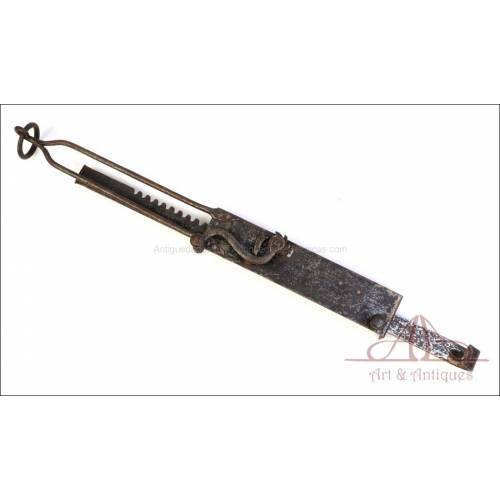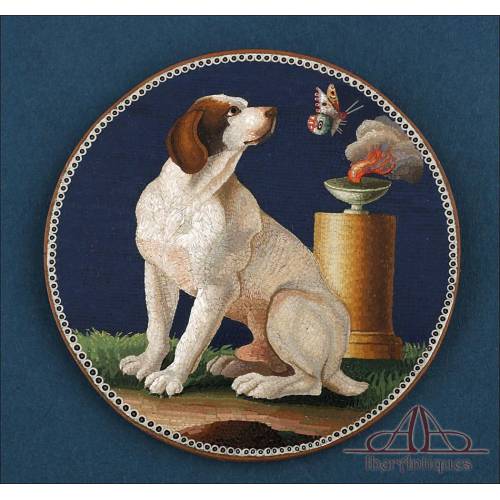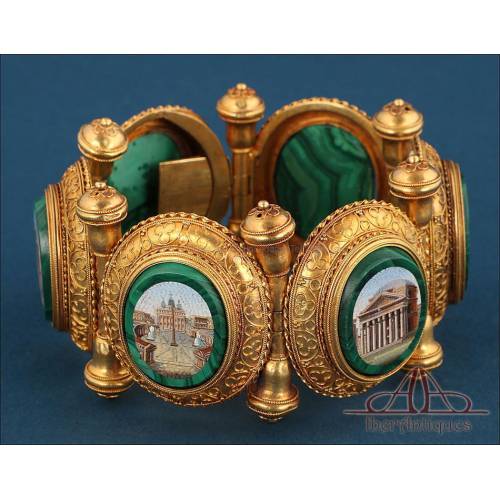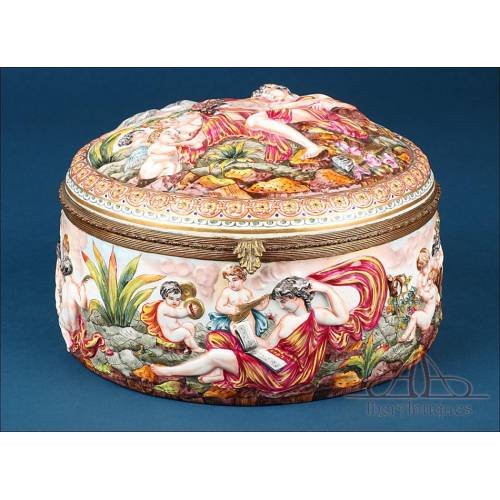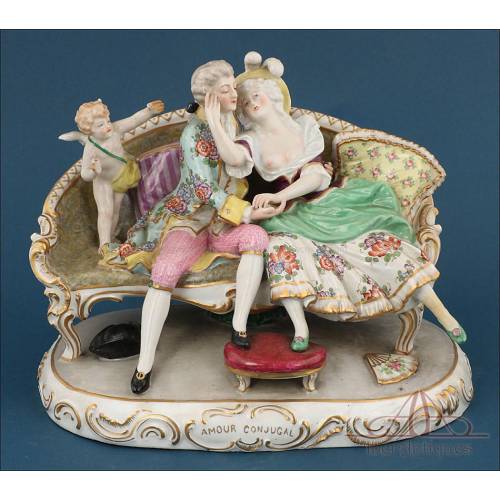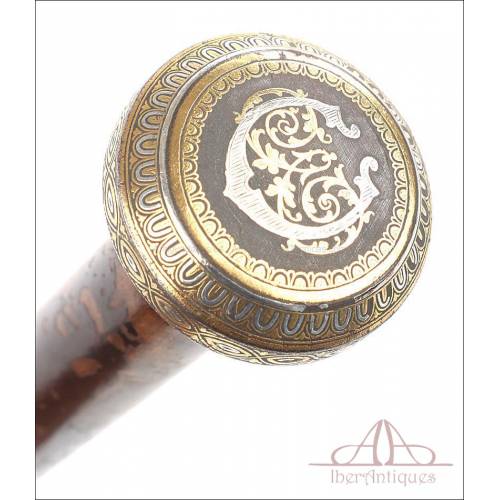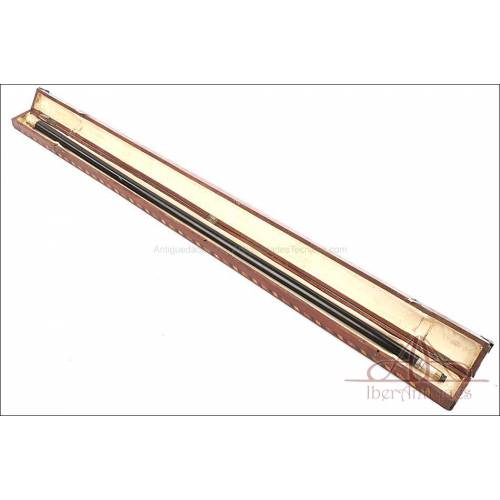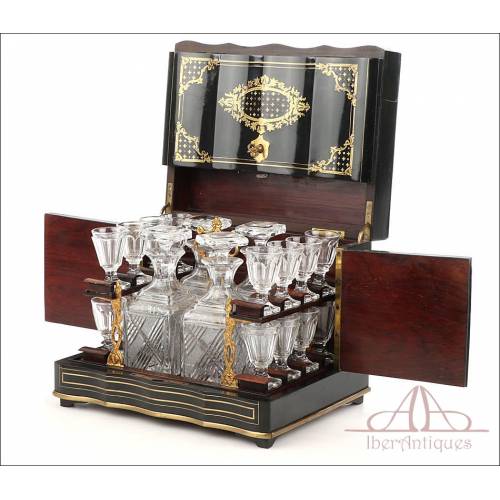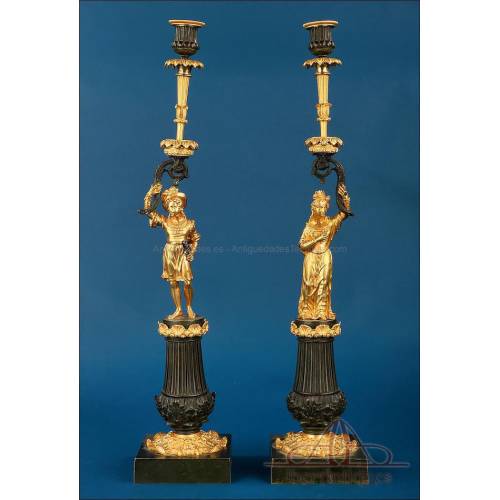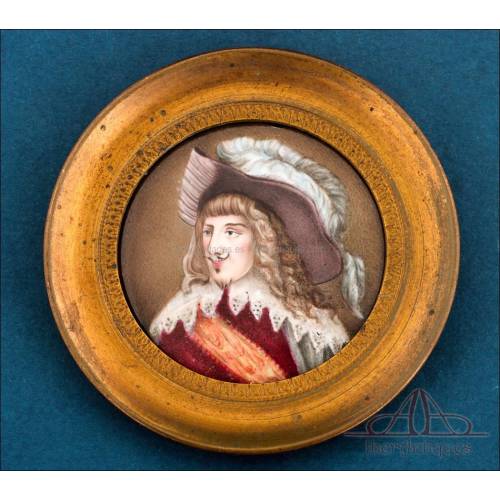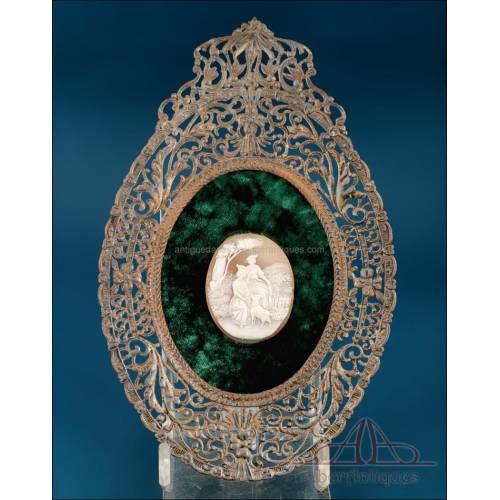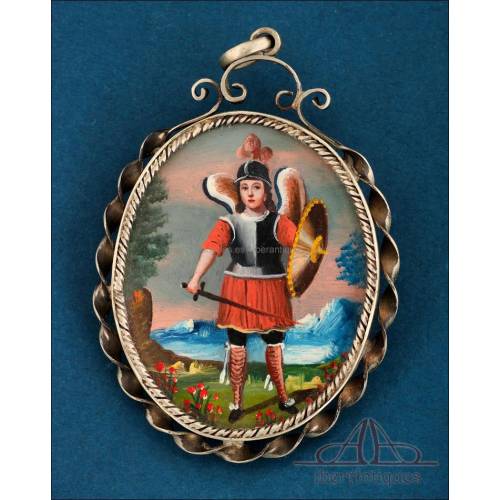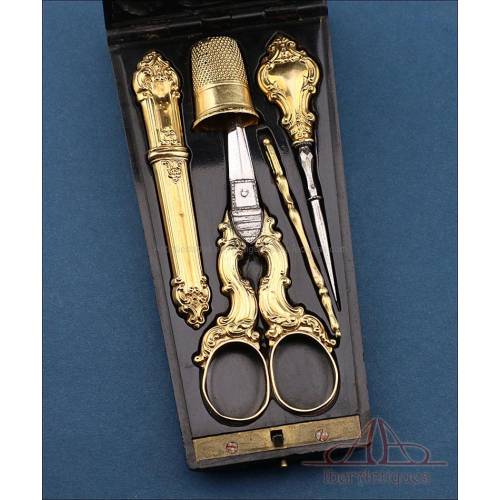E-144
Antique Porcelain Chocolate Box, Chest or Jewelry Box Germany, 19th C
Gorgeous hand-decorated Vieux Paris porcelain coffer. Good condition. Very decorative and delicate.
Antique Porcelain Chest, Chocolate Box or Jewelry Box Germany, 19th C
This exquisite jewelry box, chest, or bonbonnière made of German porcelain, crafted between 1880 and 1900 in the Thuringia region, represents the perfect fusion between practical function and decorative art. It is a unique piece within the historicist trend of the late 19th century, whose design is inspired by the Rococo style of the 18th century, so appreciated for its sophistication and ornamental richness. The oval base of the box, made of glazed white porcelain, is richly adorned with vegetal motifs and golden scrolls which, although showing slight wear from the passage of time, retain all their splendor and elegance.
The lid, fully integrated into the ensemble, holds a marvelous sculptural group that crowns the piece with a scene of intimate and refined character. A young mother, elegantly dressed and seated in a period armchair, holds her small child on her lap while reading to him from a striking red-covered book. The child, nude, rests naturally on his mother in a composition full of tenderness, complicity, and movement. The serene expression on the woman's face and the child's focused attention add an emotional dimension rarely seen in this type of decorative figures.
The modeling work is fine and detailed, with special attention to the folds of the dress, the lace of the bonnet, the raised ribbons, and the anatomical proportions. The polychrome decoration, entirely applied by hand, stands out for the delicacy of the floral and dotted motifs on the dress, which contrast with the blue of the bodice and the pink of the seat. A small loss can also be seen on one of the golden branches of the base, barely noticeable and not detracting from the beauty of the whole.
For its artistic quality, its tender and domestic theme, and its excellent state of preservation, this piece recalls the production of renowned houses such as Sitzendorf or Scheibe-Alsbach, which knew how to reinterpret with great sensitivity the forms and colors of French Rococo. Today, this porcelain jewelry box not only represents an exceptional example of Thuringian ceramic tradition, but also a highly decorative collectible item with great potential for appreciation.
It would look spectacular in a living room display cabinet or as a standout piece in an artistic porcelain collection. It can also serve as a special gift for a lover of decorative arts.
A hard-to-find piece that speaks of the refined taste of an era and meets all the requirements to attract attention and inspire admiration. Don’t let it get away.
Dimensions: 29 × 16 × 27 cm (11.41 × 6.29 × 10.62 in)
History of Thuringian Porcelain
The region of Thuringia, located in the heart of Germany, has been renowned since the 18th century for its rich ceramic tradition, especially for its production of artistic porcelain. Following the founding of the Volkstedt factory in 1760, Thuringia became an important center for the production of fine porcelain, competing with the famous Meissen and specializing in sculptural figures, vases, and high-quality decorative objects. In the 19th century, particularly between 1850 and 1900, numerous manufacturers emerged in cities such as Rudolstadt, Scheibe-Alsbach, Sitzendorf, and Unterweißbach, each with distinctive styles but all marked by exquisite detail, refined glazing technique, and the influence of Rococo and Romanticism.
During the historicist boom of the late 19th century, the factories of Thuringia produced objects that revived and reinterpreted the artistic styles of the past. Among them, the 18th-century French Rococo was one of the most reproduced, due to its elegance, femininity, and ornamental richness. These pieces, like the jewelry box in question, were often depicted with courtly scenes, family allegories, or mythological themes, and were entirely hand-painted by specialized artists. The combination of white porcelain with gold applications, together with the sculptural talent of the modelers, gave rise to creations of timeless beauty.
Today, Thuringian porcelain is highly valued in the antique and collectors’ market for its delicacy and the level of artisanal mastery it represents. Each piece is a testament to the refined European taste of the 19th century and to the skill of German workshops. Those who own one of these creations possess not only a decorative object but also a living fragment of the history of applied art.

